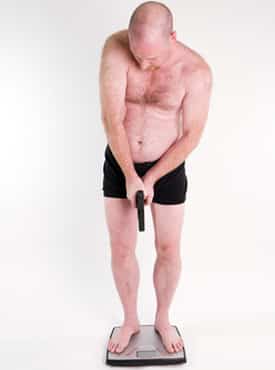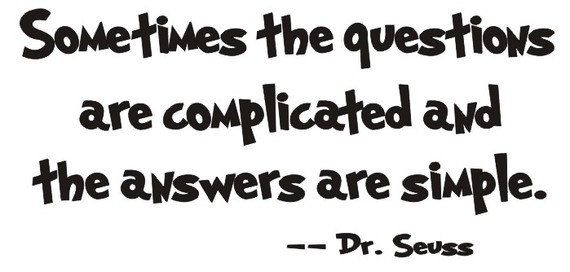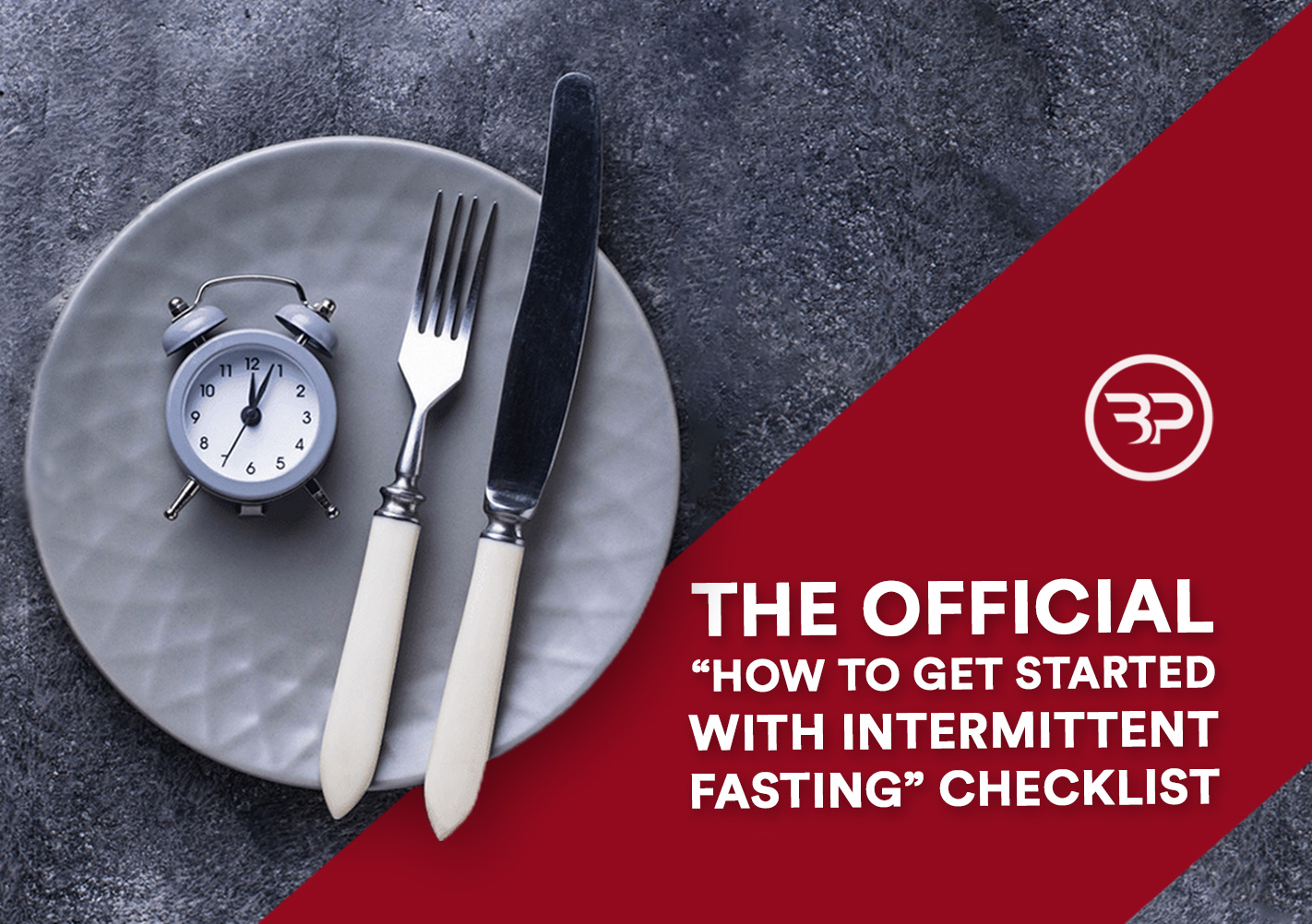11 Expert Tips for Rapid Fat Loss
February 19, 2015
Special Author’s Note, April 28, 2015: This is the most popular blog post I have ever published. I seem to have struck a chord. And no wonder. This is the combined wisdom of several top coaches on Rapid Fat loss. It’s newly revised and has a Free Checklist so you can hang it on your fridge. Get that here:
Hook me up with the Checklist, Eric!
Enjoy,
Eric
—————-————————————————————-
You’ve probably experienced the most irritating aspect of building a strong, shredded, and athletic body: stagnation.
While the occasional plateau should be expected, fat loss programs are notorious for creating soul-crushing plateaus that send you into a state of panic and disarray.
The solution sounds easy. Train harder and drop your calories. Right?
Well, not always. Rapid fat loss isn’t always cut and dried. But it does not need to be extremely complicated.
Rather than frantically searching the web for the latest “fat loss secrets,” you’ve come to the right place.
Whether you’re looking to drop a few pounds to get shredded for summer, or starting a long-term fat loss program these 11 Principles For Rapid Fat Loss will accelerate your progress.
1) Consistent Results Requires Consistent Effort
Mike Samuels of Healthy Living, Heavy Lifting
Despite the wealth of misinformation and popular media like Biggest Loser, fat loss is a long journey, not a quick fix.
Bumps in the road, busy lifestyles, and stress are bound to happen. But you need the perseverance to remain consistent and conquer plateaus.
In my experiences, most people hit plateaus because they’ve become a little complacent with their diet and slack off.
For starters: it’s imperative to start tracking your calorie and macronutrient intake. Eric’s Note: I recommend myfitnesspal.com
Besides the knowledge and awareness you’ll gain with dietary tracking, you’ll also have a renewed sense of accountability.
Lets face it; most of us know what healthy food choices and unhealthy choices are.
By consciously taking note you’ll reinforce your goal. As yourself:
“Am I accounting for everything I eat? “
“Will this help me?”
You don’t need to choke down rice cakes, chicken, and broccoli with a miserably strict diet all the time. But you do need to be honest with yourself and accept accountability to reach your goals.
2) Start the Day with Protein
Anthony Dexmier of anthonydexmier.com
Eat your proteins in the morning. A high protein breakfast will keep you more satiated throughout the day, helping you make better choices and stay on track with your caloric goal.
Whether you choose to have some carbs as well is up to you. (I would save them for dinner.) But making sure to eat a significant amount of protein in the morning will be a game changer.
Don’t forget that willpower has a battery life, and it’s generally full in the morning. If you keep the carbs for later in the day, you will probably find your diet easier to follow than if you find yourself short of calories at night.
Most times, a high protein breakfast is low enough in calories to allow you a nice serving of carbs at night.
3) Carb Cycling Made Easy
If you’re looking shred fat, build muscle, and improve your overall health, then carb cycling is your answer.
What is Carb Cycling?
Carb cycling is as easy as it sounds and is as simple as cycling carbohydrates on weight training days (high carb) and non-workout/cardio days (low carb).
High Carb: Due to the repeated muscle contractions of resistance training, your body will have increased insulin sensitivity. With this increased response to carbs, your body will drive nutrients into your muscle cells. This aids them in repair, grows them, and provides you with more energy.
Low Carb: On the non-lifting days, you keep carbohydrates low because there isn’t the same increase in insulin sensitivity. Without carbs flowing through the bloodstream, the body is forced to burn stored fuel or body fat. By minimizing carbs a few days per week, the body becomes more receptive to insulin. When you do indulge on the sugary goodness your anabolic response is maximized.
It doesn’t need to be complicated. Have more carbs on days when you’re training to improve recovery and minimize the carbs on days you’re not training. To learn more on Carb Cycling read a full overview of carb cycling made easy here.
4) If You ain’t Assessin’, you Guessin’
When it comes to changing your body it’s imperative to measure body composition, workouts, and constantly monitor them.
Tracking your progress is essential to success. Measurements of body fat, body-part circumference, lifting stats and scale weight are all vital to give a well-rounded view of your starting point and progress.
Miss any one of them and you’re potentially missing huge improvements or even early indications of plateaus.
Whenever people start dieting there is usually a big initial drop in weight. Dieting usually entails a reduction of carb intake, which brings about decreases in water balance.
Even if you gut it out through the hunger, you actually don’t want to start with too high a calorie deficit because you increase the risk of muscle loss, especially as you get leaner. If you stick to between 0.75-1.5lbs of fat loss per week, then you will be fine.
Depending on training experience and dedication to your diet, you may experience disproportionate fat loss and slight muscle gain despite being in a caloric deficit.
As a result, muscle gain could be hiding some of your rapid fat loss. You could be gaining muscle while simultaneously losing body fat. But that’s a huge win when it comes to looking better naked and improving body composition.
From there, when it comes to getting shredded without losing muscle, consistency and patience is key.
For more information from Coach Andy Morgan check out this piece on maximal fat loss and his guide to tracking and measuring progress here.
5) You’re Not lifting Heavy
By now, you already know fat loss is simple in formula, but difficult in execution. A caloric deficit, provided the body and metabolism are healthy, will cause weight loss.
Problem is, without proper training and dietary protocol, hard-earned muscle is stripped away, along with body fat, minimizing the improvements in body composition—unless you lift to prevent that from happening.
Instead of endlessly plodding on the treadmill and bangin’ out high rep resistance training, place an emphasis on heavy strength training.
Hook me up with the Checklist, Eric!
Lifting heavy with sets between one and eight difficult reps will increase testosterone levels and stimulate fast-twitch muscle fibers, offsetting the catabolism of muscle tissue and preserving muscle mass when calories are low.
In other words, to look your best and optimize body composition it’s vital to lift heavy when dieting down. Pick two or three exercises per week during “cut” phases and build strength numbers. Not only will you retain strength, you’ll also hold onto muscle while unveiling a shredded body.
6) Stop Drinking Liquid Calories
Fat loss diets suck.
You’re already eating less than your maintenance levels to force fat loss. There’s no way around it.
So why would you waste your time drinking calories, ignoring the satisfaction you get from eating actual food?
When you’re aiming for at loss rapid it’s best to chew as many of your calories as possible. More importantly, the mere act of chewing stimulates digestion with amylase to begin the breakdown of starches. Optimal digestion is vital for overall health and especially fat loss.
Please: Ditch the crappicuno caramel mocha crack-juice, lay off the protein shakes, and use a BCAA supplement for your workouts as needed.
When dieting down, chew all of your calories for better digestion and better adherence to caloric restrictions.
7) Sprints or HIIT
While diet reins king for fat loss, optimizing your body and getting the most bang for your buck is also vital.
That’s where strength works to preserve muscle mass and high-intensity interval training come in. High-intensity interval training becomes the icing on the cake due to the effects of exercise post oxygen consumption (EPOC).
EPOC is the phenomena where our respiratory rate stays elevated for hours after an intense workout to regain all the oxygen lost during the high-intensity exercise. Essentially, all the air you’re gasping for during sprinting, jumping rope must be repaid.
As a result, your body seeks oxygen to get back to baseline, keeping your respiratory rate and metabolism elevated long after exercise ends.
How much longer are we talking?
Well, in one study, groups repeated three-30 seconds sprints and found they required more energy in 24 hours than 30 minutes of moderate aerobic exercise (Townsend et al).
Furthermore, the National Strength and Conditioning Association (NSCA), examined the role of EPOC and sprinting in weight loss. They concluded that compared to continuous, lower intensity activity, sprint intervals create a greater increase in EPOC.
This increase can occur for over 24 hours with appropriate combinations of duration and intensity, leading to greater improvements in body composition (McNeely).
In other words, EPOC helps your body use more calories throughout the day to burn body fat despite shorter workouts.
Oh, and most forms of HIIT like jump rope intervals, sprinting, or complexes stimulate fast-twitch muscle fibers and neural activation, two high-performance muscle sparing benefits.
8) Drop grains for greens for at least one week
Travis Pollen of Fitnesspollenator.com
Beijing, we have a problem: You’ve been inspired by Michael Phelps diet when he prepares for the Olympics.
Problem is you’re not a World-Class athlete and you don’t require thousands of calories and carbohydrates to support training.
Instead, you’re focused on shredding body fat.
More specifically, rapid fat loss to look great naked and improve your health.
In this case, dropping carbohydrates down and going grain-free for seven days is a great trick that’s worked well with tons of clients, according to Coach Travis Pollen.
“I recommend eating all the fruit, veggies, and yams you want and even a bit of dark chocolate (70%+ for max benefits) if it satisfies a sweet tooth.”
The biggest reason to drop grains is decreased gut inflammation and an overall cleaner diet. By replacing Grains with greens you’ll consume fewer calories yet higher fiber, plus more phytochemicals and other awesome nutrients to improve digestion and overall health.
Most importantly, one week without pasta, rice, bread, cereal, etc. will leave you leaner and feeling great.
This isn’t a requirement past one week, but I urge you to try it and re-evaluate after seven days. Either continue on the same plan indefinitely or add some grains back in – but do so only in moderation and an increase in greens.
9)You Eat too much—calories are king!
It should be obvious that except for hormonal imbalances, the number one reason you’re not losing body fat is you’re consuming more calories than your burning.
Calories are still king, you must be in a caloric deficit for rapid fat loss. For moderately active people (sedentary job, 3-4 workouts per week), multiplying bodyweight in pounds by 10-12 will put them a few hundred calories below their baseline to trigger fat loss. If you’re more active, go with 12-14 calories/lb./bodyweight to compensate for additional activity.
Eating less sucks, but it’s necessary. All goals worth achieving take sacrifice and fat loss is no different. Drop your calories using the recommendations listed above. Aim to be 300-500 calories below maintenance and no more to avoid crashing the metabolism and plateauing.
10) Try Fasting for 12-16 Hour Periods
Per my last point, calories are still king. Fasting is the strategy I use to get photo-shoot ripped and accelerate fat loss because it makes your eating window shorter. Without going into the depths of all the science, intermittent fasting requires taking periods of 12-16+ hour periods without eating or drinking calories and then using the remaining hours of the day as feeding window.
As a result, you’re able to cue in on true hunger signals for better self-awareness, restrict your calories to hammer fat loss, and potentially improve digestive health by giving your gut a rest.
IF is tough and requires consistent effort, but it’s a liberating dietary style that accelerates fat loss allows for a little more flexibility in food choices, which you can read more about here from my man John Romaniello here, and here.
11) Reduce Stress
Life is already stressful. Jobs, family, school, and daily stressors have a big impact on our overall mood and function. More specifically, when you’re stressed your body produces more cortisol, a hormone that potentially increases body fat storage.
Having worked with hundreds of busy professionals, parents, and athletes it’s shocking how many people are constantly stressed, all day, every day. Unfortunately, this makes dieting down difficult, starting a vicious cycle of stress about a diet and lack of fat loss that ironically, makes fat loss more difficult.
Take time each day to unwind by yourself, meditate (I recommend the headspace app), laugh, and do something fun. My dad always said if you’re not having fun, you’re doing it wrong, and he’s spot on. Take time to chill, relax your brain, and reap the benefits of a lower stress lifestyle.
Wrap Up
Like any goal, there are multiple routes to your destination. In the case of rapid fat loss, the main tenets will always be a sound diet that puts you in a caloric deficit, and consistent efforts in the kitchen and gym. Plateaus are bound to happen, and that’s why we’re here. Armed with these 11 Principles for Radical Fat Loss you’ll be able to troubleshoot your routine and get back on track.
Hook me up with the Checklist, Eric!
Resources: Baechle, Thomas, and Roger Earle. Essentials of Strength and Conditioning. 3rd. Champaign, Il: The Role of Excess Post- Exercise Oxygen Consumption (EPOC) In Weight Loss Programs; National Strength and Conditioning Association
McNeely, Ed. Townsend, Jeremy R., et al. “Excess Post-Exercise Oxygen Consumption (EPOC) Following Multiple Effort Sprint And Moderate Aerobic Exercise.” Kineziologija 45.1 (2013): 16-21.









[…] https://bachperformance.com/11-principles-rapid-fat-loss/ […]
[…] 11 Principles For Rapid Fat Loss — Eric Bach […]
[…] 11 Principles for Rapid Fat Loss via Eric Bach […]
Google
The time to read or check out the content material or websites we have linked to below.
There are no magic foods. Some foods may help you suppress your appetite a little. Some other foods may slightly increase your metabolic rate. Unfortunately, the effect is miniscule. The only way to really lose fat is to consume fewer calories than you burn. This way your body will tap into the fat stores to get the energy it needs.
[…] and exercise. Basically, if you’re burning more calories than you’re consuming, you should rapidly lose fat. This is an oversimplification because the human body is complex. At their root, all successful fat […]